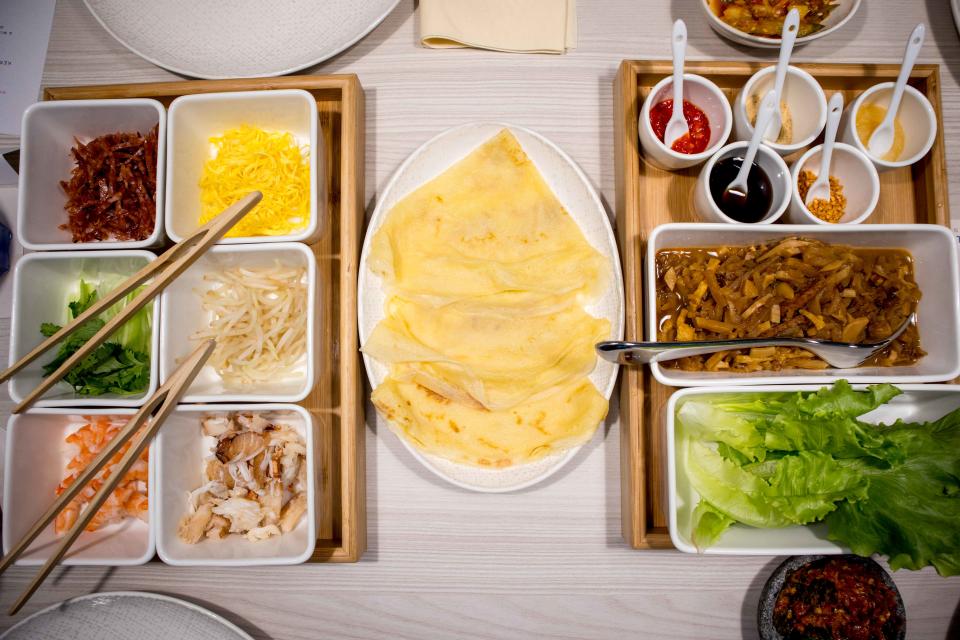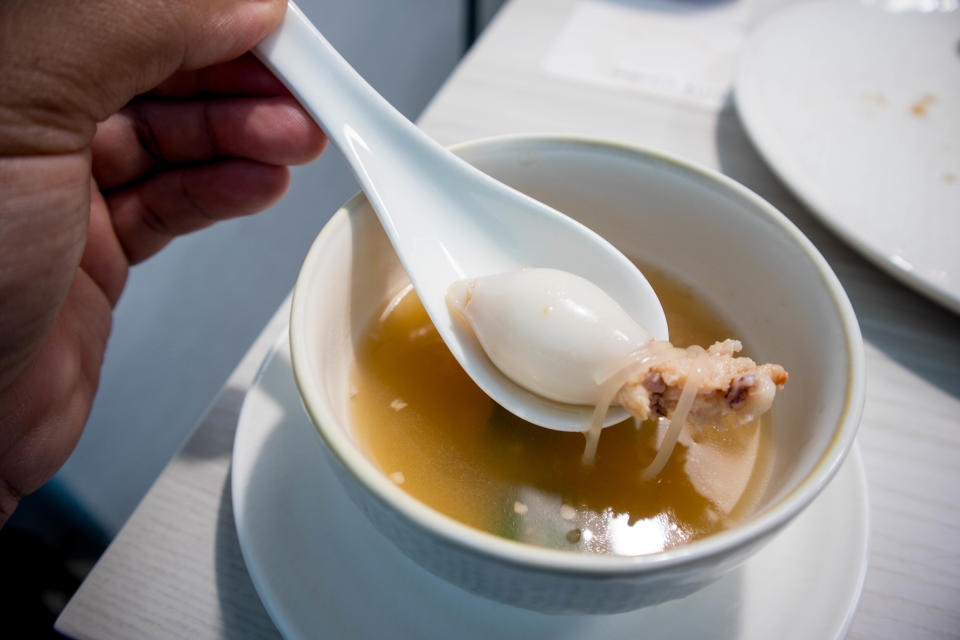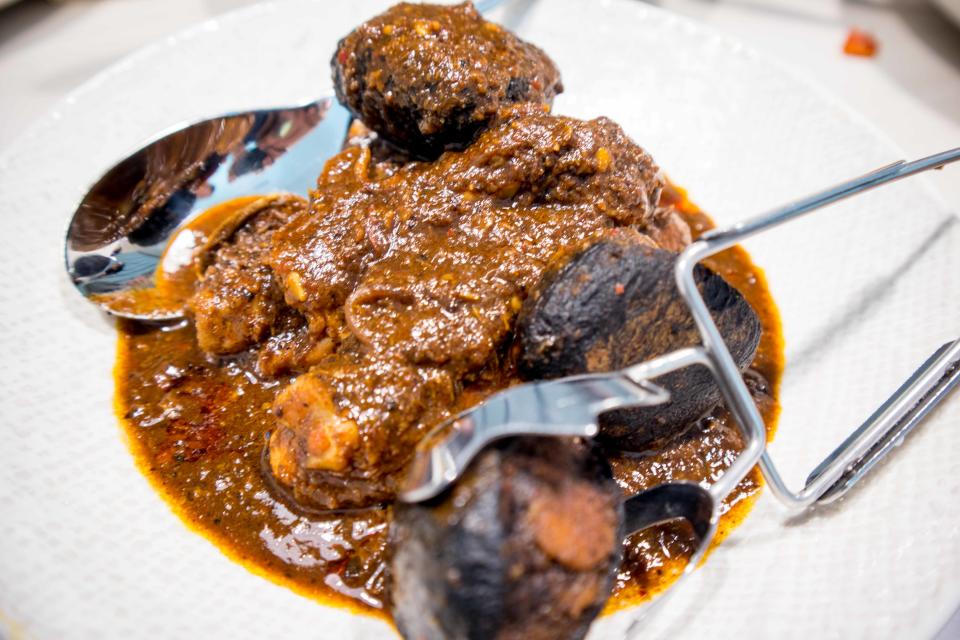Food review: Colour me Indigo Blue anytime

SINGAPORE — I've always kept as far a distance as possible from any media tasting invites for a Peranakan restaurant. When it comes to Peranakan cuisine, there's always a hint of egotism in deference to one's roots in the culture as if to say "I'm a better Peranakan than you because just look at how lovely my Babi Pongteng turned out." Given the utmost care one has to afford at the risk of offending 'true blue Peranakans', most Peranakan restaurants exist on extreme spectrums. The food either lay claim to absolute authenticity to heritage recipes (and then fail) or they're watered-down versions of hearty Peranakan cuisine (beginner's Peranakan food, as I like to call it).
READ MORE:
Food review: The menu at Tablescape is uncomplicated but brimming with deliciousness
Eat like a local: The A to Z guide of Singapore’s most iconic local, hawker and specialty foods
Tosh Zhang and Jaylee Woo join cast of web series 'So Bright' Season 2
Women On Top: Kamini Ramachandram of MoonShadow Stories
So it's perhaps understandable that it took me three days to agree to attend a media tasting of Les Amis' newest and greatest homage to Peranakan cuisine, Indigo Blue Kitchen. As I'm unfamiliar with new establishments, a Google search was in order. Online fodder amongst food blogs has it that the chef at Indigo isn't even Peranakan himself. Cue righteous indignation! Now before you start getting your batik panties in a bunch, allow me to elucidate. The recipes at Indigo were passed down by the matriarch of Les Amis Group Chairman, Mr Desmond Lim's family. These are his grandmother's handwritten recipes that, in the hand of another Peranakan, might potentially be changed and influenced by personal preferences. It's a strategic decision, really, to finesse the food in the hands of someone capable—in this case, 28-year-old Chef Chong Jun Xiang.
Peranakan food, much like its culture, is all about family. Its a deeply revered tradition for families and friends to gather around a Tok Panjang and enjoy delicacies that have been painstakingly prepared usually many hours before the meal.

Here at Indigo, it's no different. The focus is on communal dining, and it starts with a huge DIY tray of condiments, sauces, and ingredients that go into making traditional popiah. Instead of using popiah skin made with dough, here, the soft egg skin variation is preferred. The IB’s Nonya Poh Piah (S$32) stands out with the addition of unique ingredients like sweet Lap Cheong (Chinese sausage) and meaty crab meat. I appreciate the bisque-like flavours of julienned turnips (the main ingredient without which popiah doesn't exist) having tried my hand at making one a while back, and knowing that it takes much patience to get the mixture to be this saturated with such glorious umami flavours. A word of advice for first-time popiah rollers: always start with a leaf of lettuce so that the other wet elements have something to sit on.

A bowl of Sotong Sumbat (S$12) looks somewhat muted but is surprisingly a heady mix of flavours that reminds me of good ole chicken soup but with a touch of salty tang thanks in part to the addition of Tang Chye. In it floats a small baby squid, the colour of porcelain and tender, amply stuffed with minced pork and prawn. I quite simply enjoyed the entire affair.

The one Peranakan mainstay I've always had trouble understanding is the Chicken Buah Keluak (S$24). I simply didn't get the obsession with this dish, a reticence I blame on all the inferior versions I've had from restaurants that try to tamper the intensity of the buah keluak to suit beginner diners. Here, it is the colour of very fertile earth—a deep brown that almost veers into a shade of black to match the innards of the buah keluak. It is bold and unashamedly sophisticated in its flavour, see-sawing between notes of beautiful bitterness from the buah and sweet savouriness—a result of hours of letting aromatics cook down, separate, and amalgamate.

Beef lovers would delight in the Beef Rendang (S$22), the highlight of which is its melt-at-the-roof-of-your-mouth tenderness. Indigo uses Australia beef brisket and shin—which explains its utter softness—but with Rendang, I tend to cast a side-eye to variations that use naturally easy to tenderise meats without the tedious hours of cooking. My mum uses the batang pinang of the cow and to tenderise that takes hours slogging over the fire, which also infuses lots of flavour into the meat.

A bowl of Nonya Chap Chye comes with a chockfull of ingredients to satisfy even the most ravenous Peranakan glutton: Prawns, pork belly, cabbage, bean curd sheets, dried lily buds, shiitake mushrooms & mung bean noodles. Satay Babi Lemak (S$16) is creamy and addictive, no thanks to it being cooked in santan spiced with nutty candlenut. Look out for the most finely chopped slivers of kaffir lime leaves which balances out any hints of cloy from the rich santan.

But if you were to order only one thing from the menu, please make it the Prawns Chilli Garam. Fresh, plump prawns are pre-fried to crispy perfection, which is smart as it ensures the prawns are not an overcooked, mushy mess while waiting for the chillis to pecah minyak, as is often the case with most of the Sambal Udang I've had the misfortune of eating at weddings. Here, prawns are halved before being flash-fried, skins and all giving it the signature crunch a dish likes this desperately needs. The bright orange sauce clings on to every morsel, and although it comes with very visible chilli seeds, it veers more towards a tangy sweetness then a fiery spice. I believe I almost ate the entire plate, all the while snickering at the silliness of my dining companions peeling off the skin and missing the whole point of this wonderful creation.

Desserts are a decadent and sweet affair. Here lies six rounds of Apom (S$14), a plain doughy dessert made with fermented rice batter and santan. On its own, it imparts a slight hint of sourness due to the fermentation process and nothing much else. At Indigo, it is to be dipped liberally in one of the three fruit pengats—Jackfruit, Banana, and Durian. The pengat is a sweet caramelised porridge made by simply combining sugar, santan, and gula Melaka—expect lots of thick, gooey sweetness. The pengat absorbs much of the defining flavours of the fruit, resulting in a dessert with very distinct personalities that you know comes from the same family.
To end allow me the liberties of a popular Nyonya quatrain:
Tanam selasih di tepi perigi,
Lambat laun berbunga juga,
Walaupun kasih bertukar ganti,
Ada masa terkenang jua.
And terkenang (to remember fondly) is something that I will do with the food I've had the pleasure of eating this fine afternoon. I can imagine myself sitting at a Tok Panjang catching up with family and friends over the latest family gossip, and enjoying the spread of dishes created from the heritage recipes of Chairman Desmond Lim's family. If this is what Peranakan food is all about, colour me Indigo Blue anytime.
1 Scotts Road, #03-09/10/11, Shaw Centre, Singapore 228208, +65 6235 3218.
Close on Mon. Tue-Sun, Lunch: 12pm to 3pm, Dinner: 6.30pm to 10pm


